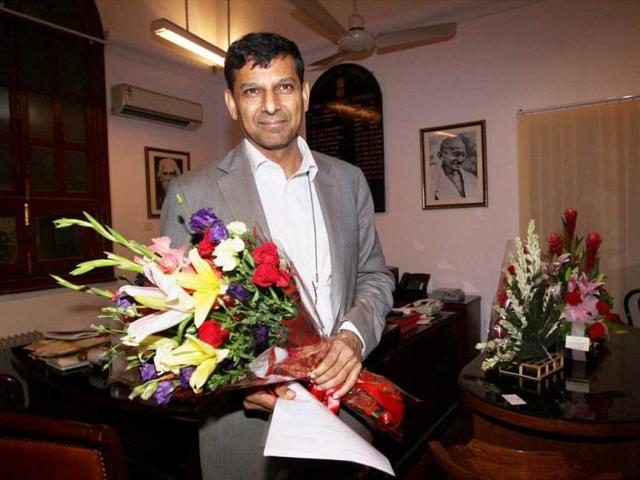Posterity, not markets' fickleness, will judge Rajan as RBI governor
RBI’s new governor Raghuram Rajan’s new job comes with unenviable challenges but going by his first few days at the helm, he seems to be a most suitable man for it, writes Chanakya.
When Reserve Bank of India’s (RBI’s) new governor Raghuram Rajan, 50, took charge last Wednesday, an Indian news spoof portal promptly ran a post entitled ‘Raghuram Rajan’s handsomeness averts India’s economic crisis’.

Rajan certainly has an aura about him; he’s photogenic and articulate; is an alumnus of the crème de la crème of institutes — MIT, IIM and IIT; and has a CV and track record that includes, besides a tenure as the International Monetary Fund’s chief economist and, more recently, chief economic adviser to the ministry of finance, the reputation of having been able to presciently predict the global economic slump of 2008.
As Rajan hits the ground running, business leaders, home loan borrowers and investors seem to have one question in mind: will the change at the helm of India’s central bank mark a turn towards lower interest rates? The stock market and the rupee greeted Rajan with some cheer, after he kicked off his first day on Mint Street announcing a few steps clearly demonstrating that he means business.
Everyone you speak to — from bankers, entrepreneurs and executives to investors — hopes Rajan will usher in a pro-growth shift in India’s monetary policy.
Will he do that? Everyone will be keenly waiting for his mid-quarter credit policy, scheduled for September 20, just a fortnight after he took charge.
Rajan faces what economists call a central banker’s trilemma. He has to arrest the rupee’s slide, cool inflation and create conditions that will boost growth.
Most central bankers have to deal with one or two of these challenges at a time. Attempting all three simultaneously is a Herculean task.
When growth falters, it is usually expected that the central bank will cut interest rates to boost demand and spending. Higher demand and spending that is triggered by lower interest rates can also push prices up and fuel inflation, especially when the current retail inflation rate is around 9.6%.
He has a pro-growth image that has triggered hopes that he will quickly shift the balance towards growth in the classic price versus investment trade-off.
How Rajan deals with that will be keenly watched but that’s not where his challenges end. There is the free-falling Indian currency to contend with.
Since May the rupee has depreciated 20% to the US dollar and a part of the reason for that has been the beginning of a recovery in the US economy and the winding down by the US Federal Reserve of its easy money regime. As dollars flow out of Indian markets, the rupee has depreciated.
But besides global factors, India’s faltering growth rate (in April-June, it fell to a measly 4.4%) and uncertain policies have made the economy unattractive to foreign direct investors.
While there is not much that the new RBI governor can do about it — he can only hope that the government pitches in here — there is much that he shouldn’t. His predecessor Duvvuri Subbarao focused on taming prices rather than easing interest rates to boost spending.
And, when the rupee went into free-fall, he took the somewhat desperate and, as some would say, retrograde measures, of slapping controls on foreign exchange that individuals and companies could take out of the country. Shortly after those steps were announced, the rupee dived further.
Those sort of steps are the ones most people hope Rajan would eschew.
The other day, a senior policy-maker involved in India’s economic management, made a very pertinent point to me: “The most important problem that the RBI governor will have to address is that of managing the current account deficit (CAD). It’s a far deeper structural problem of which the falling rupee is a symptom.”
As India’s top banker, Rajan cannot alone produce a panacea for all of the economy’s ailments. He is also acutely conscious of one significant fact: The primary duty of most central banks in the world is to influence the flow of money and credit.
In RBI’s case that comes with a few associate roles as well: it has to have a monetary policy that keeps prices stable and ensures adequate funds to productive sectors. It is also a watchdog for banks. It prints money and prevents volatility in the foreign exchange market.
Besides, it also has to act as the central and state governments’ banker and lender of last resort.
Rajan’s new job comes with unenviable challenges but going by his first few days at the helm, he seems to be a most suitable man for it. On his first day, the new governor made it clear that he wasn’t aiming at accumulating ‘Likes’ on his Facebook page and that some actions may not be popular.
The markets applauded him but then it is posterity and not the fickleness of stock and currency traders that will judge the performance of the 23rd governor of the RBI.




